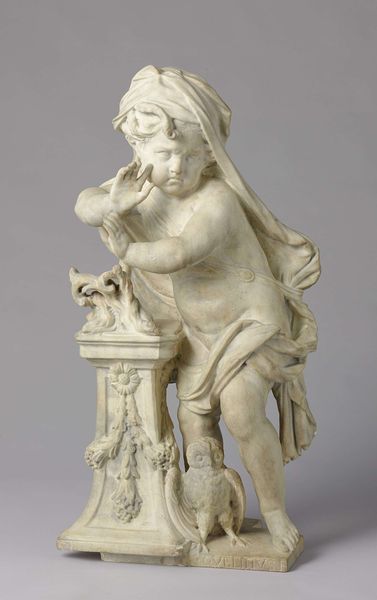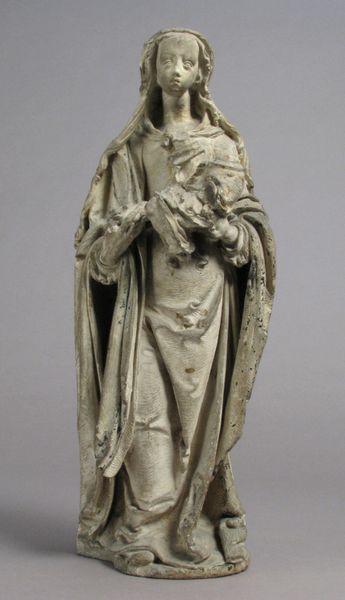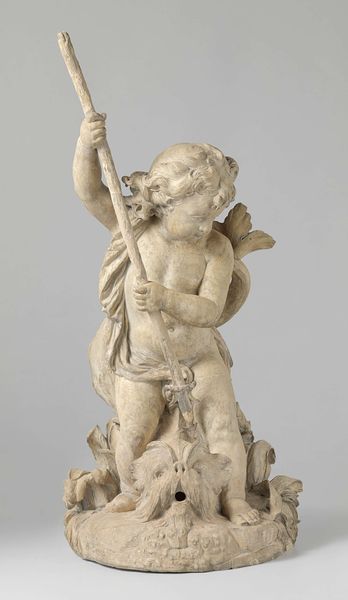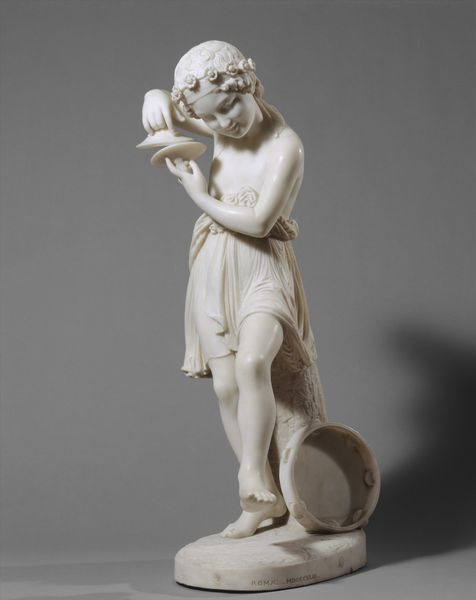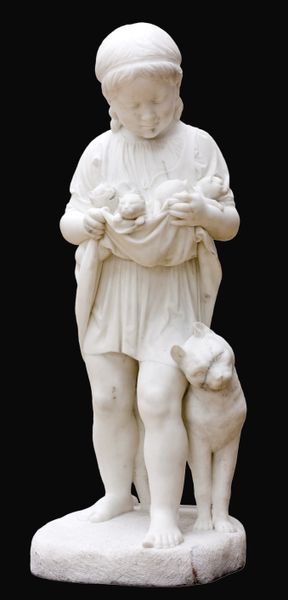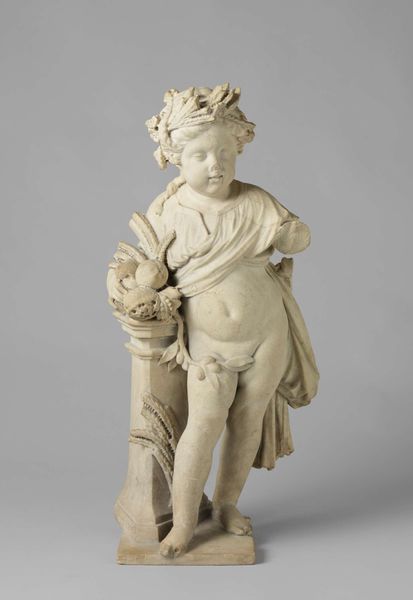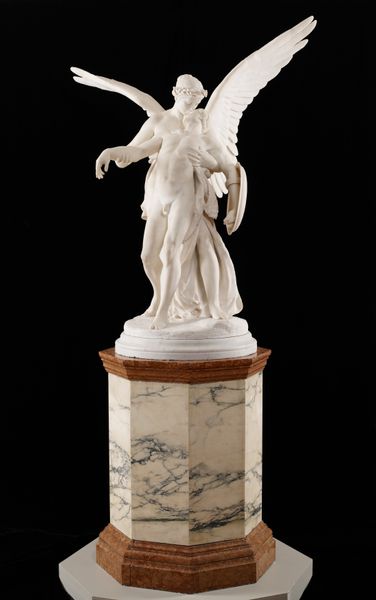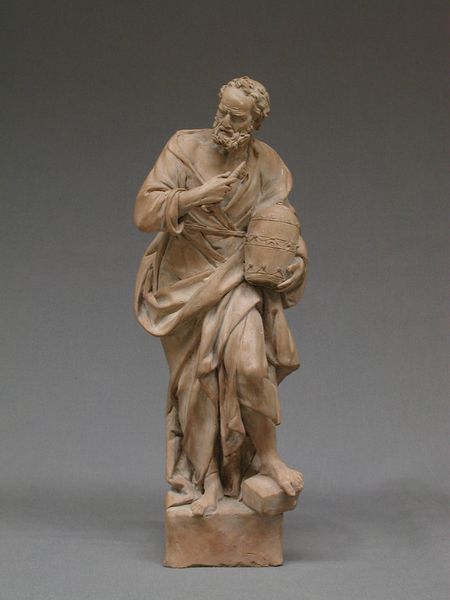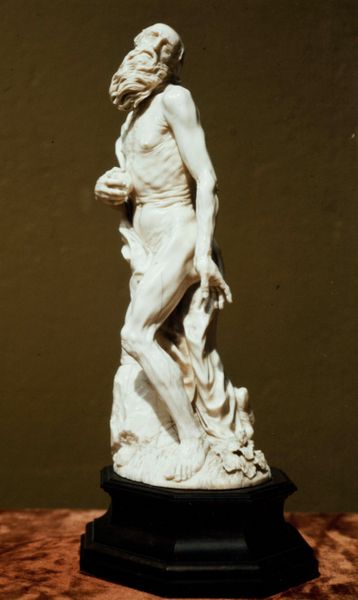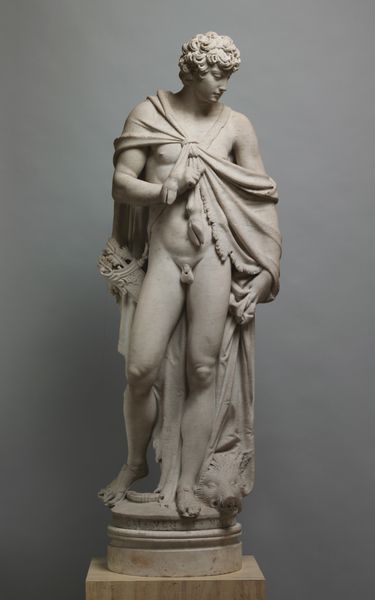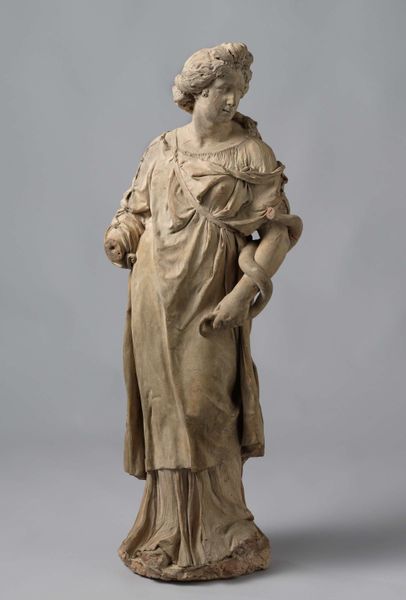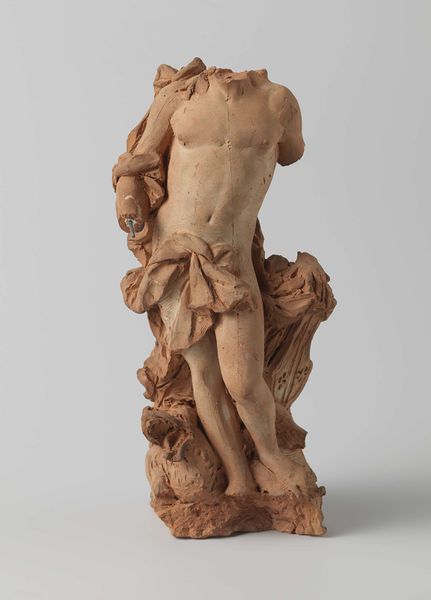
ceramic, porcelain, sculpture
#
allegory
#
sculpture
#
ceramic
#
classical-realism
#
porcelain
#
figuration
#
sculpture
#
history-painting
#
decorative-art
#
rococo
Dimensions: Height: 8 3/16 in. (20.8 cm)
Copyright: Public Domain
Editor: This porcelain sculpture, “Summer (Ceres),” made by Doccia Porcelain Manufactory between 1755 and 1775, depicts a woman with a child, both seemingly struggling to hold onto sheaves of wheat. There's an odd tension between the delicate material and what feels like a scene of labor. What stands out to you in this piece? Curator: The tension you observe is palpable, and speaks volumes about the 18th century’s complex relationship with labor, class, and representation. On the surface, we see Ceres, the Roman goddess of agriculture, usually symbolizing abundance, yet there is an underlying unease. Does the child represent the future, burdened by agricultural labor, or perhaps symbolizing the vulnerability of that abundance? Consider how the Rococo style, often associated with leisure and aristocracy, is here employed to depict a goddess linked to agrarian society. How might the material—delicate porcelain—complicate readings of power, labor and access to resources? Editor: That's interesting – I hadn’t thought about the choice of porcelain as part of the message. So, is this sculpture perhaps critiquing the idealization of rural life, hinting at the struggles beneath the surface? Curator: Precisely! The artist invites us to consider the socio-political realities masked by idealized representations. Where does the labor of production fit into this image of Summer? The piece prompts us to consider whose bodies are celebrated and whose are rendered invisible. The fact that this was produced in the mid-18th century – a period of growing class stratification – makes it particularly incisive. Editor: It is like it's questioning who really benefits from this ‘abundance’. I will certainly think about porcelain differently now, seeing it as a potential tool for social commentary, and not just decoration. Curator: Exactly. By bringing awareness to these complexities within visual culture, we gain insight into the ongoing negotiation between aesthetics, power, and representation.
Comments
No comments
Be the first to comment and join the conversation on the ultimate creative platform.
